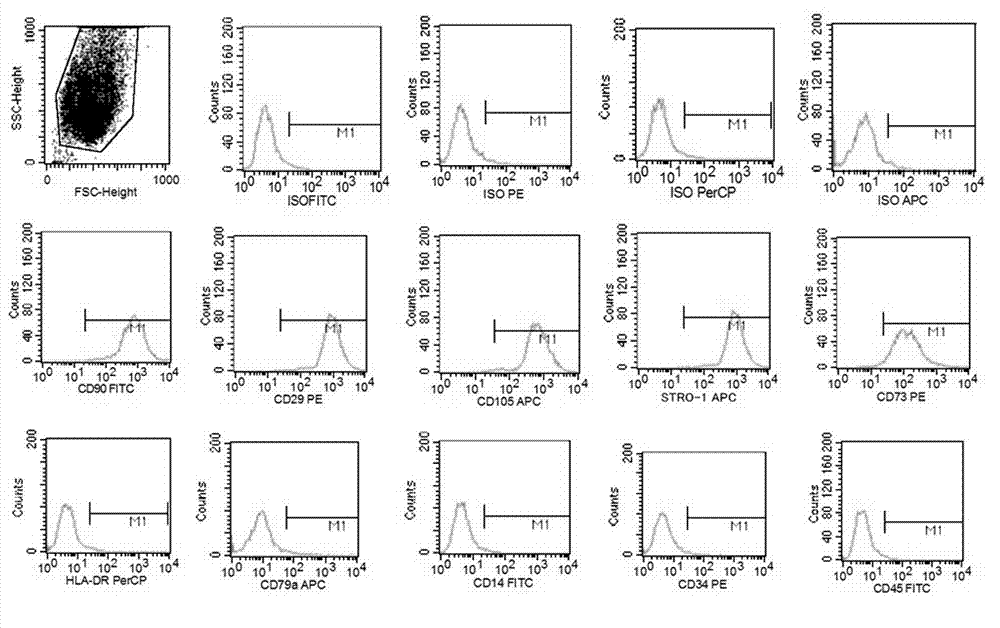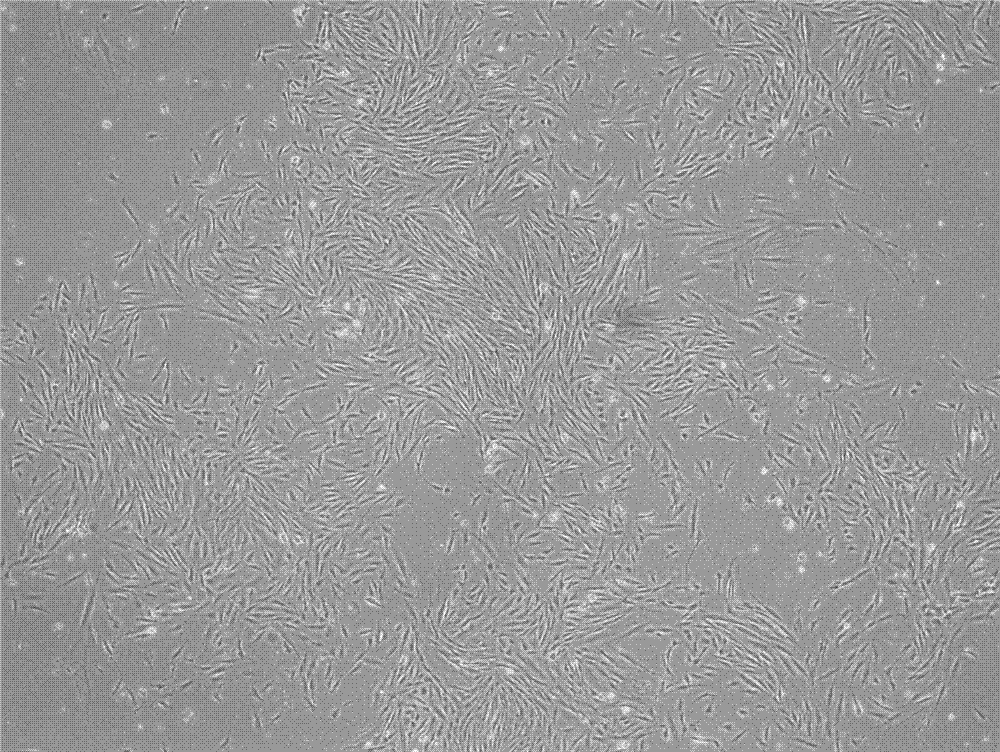Method for inducing dental pulp mesenchymal stem cells to be differentiated into nerve cells
A technology for stem cells and nerve cells, which is applied in the field of inducing the differentiation of dental pulp mesenchymal stem cells into nerve cells, which can solve the difficulty of purifying the final product of cell culture, the contamination of exogenous viruses and pathogenic factors, and the allergic reaction of xenogeneic serum, etc. problems, to facilitate the timing of treatment, improve biosafety, and increase the rate of differentiation
- Summary
- Abstract
- Description
- Claims
- Application Information
AI Technical Summary
Problems solved by technology
Method used
Image
Examples
Embodiment Construction
[0042] The present invention will be further described in detail below in conjunction with specific examples.
[0043] The invention provides a method for inducing the differentiation of dental pulp mesenchymal stem cells into nerve cells, comprising the following steps.
[0044] Step 1, extraction of amniotic membrane stem cells and collection of amniotic membrane stem cell culture supernatant.
[0045] (1) Placenta collection: With the informed consent of the puerpera, the placenta was collected from healthy fetuses delivered by cesarean section at term, stored at 4°C, and transported to the laboratory within 24 hours. Maternal blood should be collected within 7 days before delivery for AIDS testing, hepatitis B testing, hepatitis C testing, cytomegalovirus testing, syphilis testing, alanine aminotransferase testing, and mycoplasma testing.
[0046] (2) Primary extraction of amniotic membrane stem cells: Bluntly separate the amniotic membrane from the umbilical cord surface...
PUM
| Property | Measurement | Unit |
|---|---|---|
| concentration | aaaaa | aaaaa |
Abstract
Description
Claims
Application Information
 Login to View More
Login to View More - R&D
- Intellectual Property
- Life Sciences
- Materials
- Tech Scout
- Unparalleled Data Quality
- Higher Quality Content
- 60% Fewer Hallucinations
Browse by: Latest US Patents, China's latest patents, Technical Efficacy Thesaurus, Application Domain, Technology Topic, Popular Technical Reports.
© 2025 PatSnap. All rights reserved.Legal|Privacy policy|Modern Slavery Act Transparency Statement|Sitemap|About US| Contact US: help@patsnap.com



